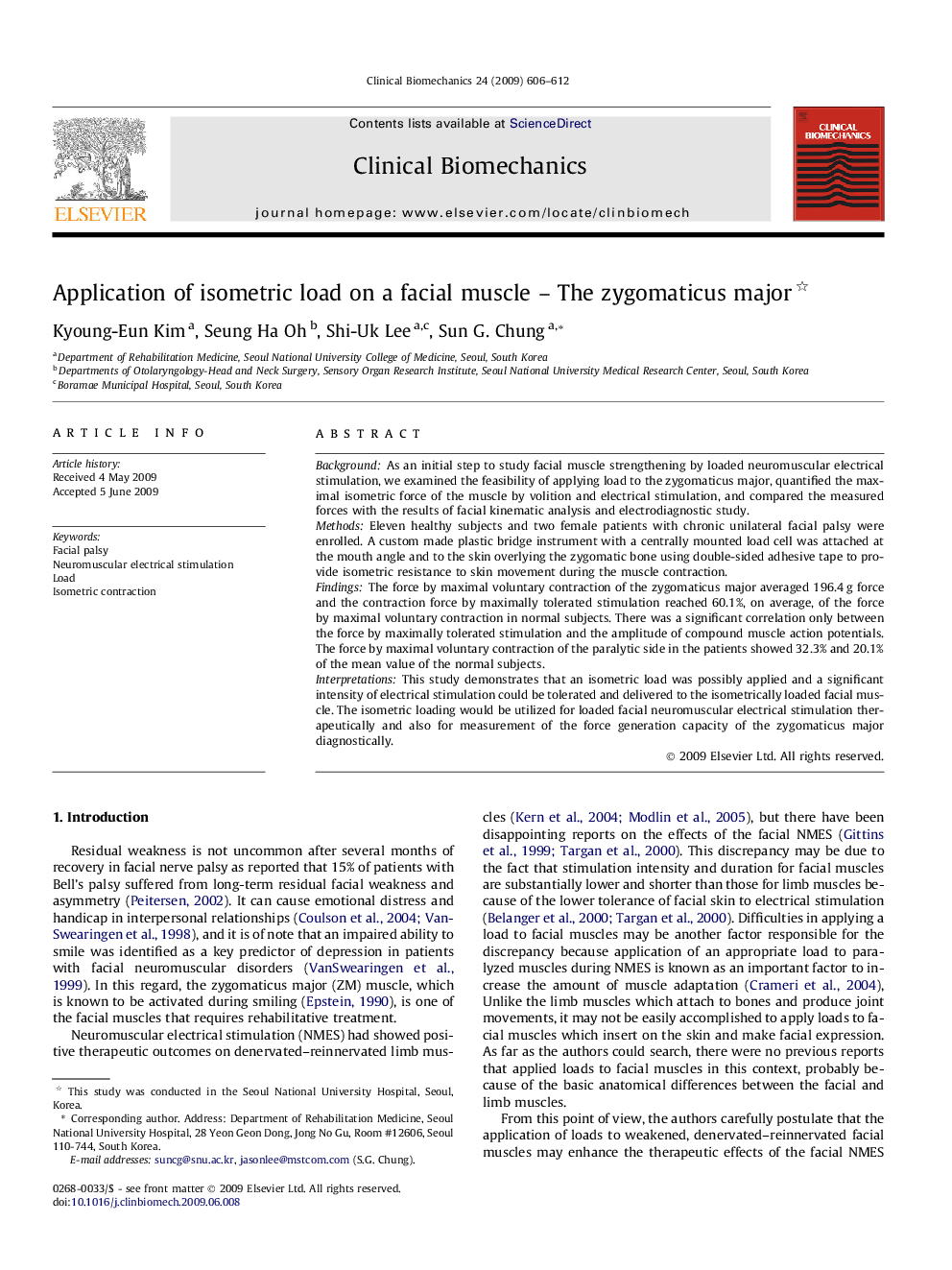| Article ID | Journal | Published Year | Pages | File Type |
|---|---|---|---|---|
| 4051234 | Clinical Biomechanics | 2009 | 7 Pages |
BackgroundAs an initial step to study facial muscle strengthening by loaded neuromuscular electrical stimulation, we examined the feasibility of applying load to the zygomaticus major, quantified the maximal isometric force of the muscle by volition and electrical stimulation, and compared the measured forces with the results of facial kinematic analysis and electrodiagnostic study.MethodsEleven healthy subjects and two female patients with chronic unilateral facial palsy were enrolled. A custom made plastic bridge instrument with a centrally mounted load cell was attached at the mouth angle and to the skin overlying the zygomatic bone using double-sided adhesive tape to provide isometric resistance to skin movement during the muscle contraction.FindingsThe force by maximal voluntary contraction of the zygomaticus major averaged 196.4 g force and the contraction force by maximally tolerated stimulation reached 60.1%, on average, of the force by maximal voluntary contraction in normal subjects. There was a significant correlation only between the force by maximally tolerated stimulation and the amplitude of compound muscle action potentials. The force by maximal voluntary contraction of the paralytic side in the patients showed 32.3% and 20.1% of the mean value of the normal subjects.InterpretationsThis study demonstrates that an isometric load was possibly applied and a significant intensity of electrical stimulation could be tolerated and delivered to the isometrically loaded facial muscle. The isometric loading would be utilized for loaded facial neuromuscular electrical stimulation therapeutically and also for measurement of the force generation capacity of the zygomaticus major diagnostically.
